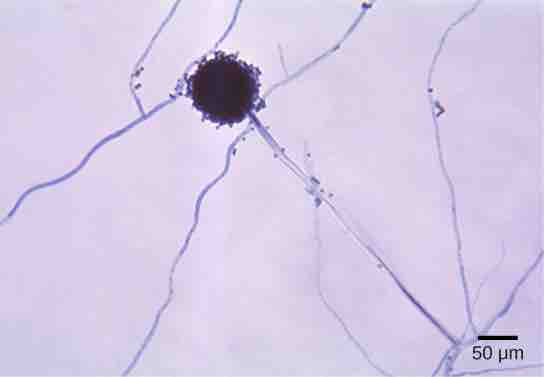Deuteromycota: The Imperfect Fungi
Imperfect fungi are those that do not display a sexual phase. They are classified as belonging to the form Phylum Deuteromycota. Deuteromycota is a polyphyletic group where many species are more closely related to organisms in other phyla than to each other; hence it cannot be called a true phylum and must, instead, be given the name form phylum. Since they do not possess the sexual structures that are used to classify other fungi, they are less well described in comparison to other divisions. Most members live on land, with a few aquatic exceptions. They form visible mycelia with a fuzzy appearance and are commonly known as mold. Molecular analysis shows that the closest group to the deuteromycetes is the ascomycetes. In fact, some species, such as Aspergillus, which were once classified as imperfect fungi, are now classified as ascomycetes.
Reproduction of Deuteromycota is strictly asexual, occuring mainly by production of asexual conidiospores . Some hyphae may recombine and form heterokaryotic hyphae. Genetic recombination is known to take place between the different nuclei.

Example of an imperfect fungus
Aspergillus niger is an imperfect fungus commonly found as a food contaminant. The spherical structure in this light micrograph is a conidiophore.
Imperfect fungi have a large impact on everyday human life. The food industry relies on them for ripening some cheeses. The blue veins in Roquefort cheese and the white crust on Camembert are the result of fungal growth. The antibiotic penicillin was originally discovered on an overgrown Petri plate on which a colony of Penicillium fungi killed the bacterial growth surrounding it. Many imperfect fungi cause serious diseases, either directly as parasites (which infect both plants and humans), or as producers of potent toxic compounds, as seen in the aflatoxins released by fungi of the genus Aspergillus.